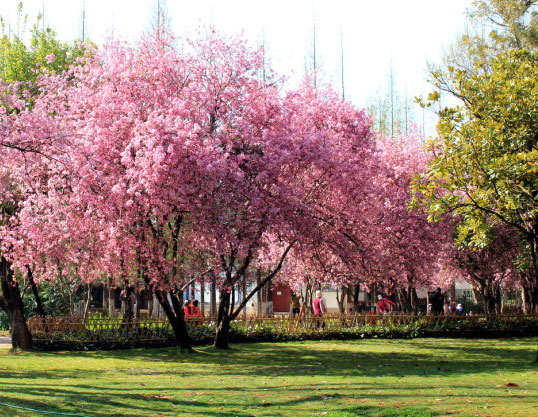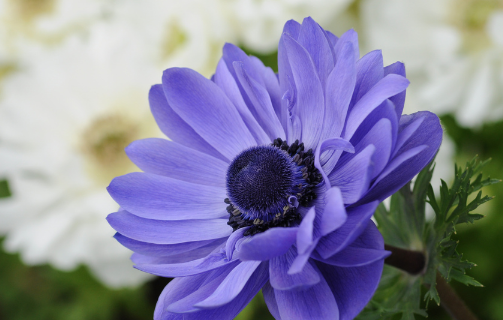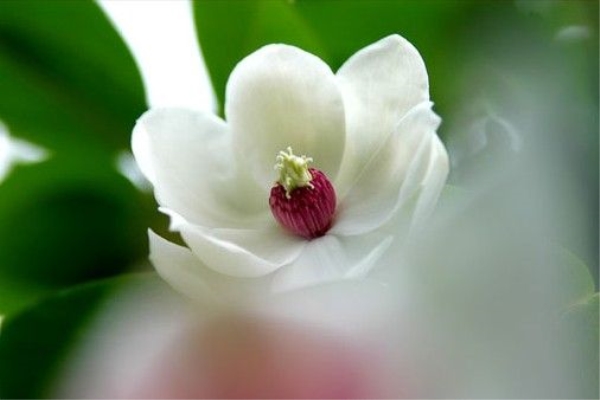Making of Bonsai of Begonia
Step 1: prepare the basin soil
When making weeping begonia bonsai, we need to choose a suitable flowerpot. In general, we can choose medium-sized deeper flowerpots, which can be square, round, or in the shape we like. Flowerpots are generally made of glazed pottery or purple sand pottery. In the cultivation of flowers, the choice of soil is also very important. The cultivated soil can be mixed with 4 parts of rotten leaf soil, 4 parts of garden soil, 1 part of organic fertilizer and 1 part of river sand, or some bone powder can be added as base fertilizer.
Step 2: the styling choice of bonsai
When making bonsai, it can be shaped according to the shape of the tree. there are three shapes to choose from: oblique dry type, curved dry type or cliff type, which can be molded according to the actual needs. In the modeling, generally use brown silk climbing, and according to the need to trim.
Bonsai is usually made during the dormant period or after flowering of Begonia.

Production and maintenance of potted landscape of weeping begonia
Preparation of potted soil for potted landscape production of weeping begonia
When making the bonsai of weeping begonia, you need to choose a suitable flowerpot.
In general, choose a medium-sized, deeper flowerpot, which can be square or round. When choosing flowerpots, purple sand pottery or glazed pottery is better. The shape and color of flowerpots are best coordinated with the tree shape and color of crabapple.
Soil is also very important, on the basin generally need to use loose and fertile soil, to rotten leaf soil and garden soil is better, add some sand, you can fill some bone powder to make base fertilizer.
Selection of bonsai modeling with weeping begonia
In the production of bonsai, can be shaped according to the tree shape, generally can be made into oblique dry type, cliff type or curved dry type, specific can be molded according to the actual needs.
Generally speaking, the bonsai of hanging begonia is climbed with brown silk and needs to be pruned in combination with pruning. Bonsai is made during the dormant period or after flowering of weeping begonia.
Maintenance of potted landscape of weeping begonia
It should be noted that the bonsai of hanging-branch begonia needs to remove the brown silk used in modeling in time to avoid the occurrence of sunken silk and affect the growth of hanging-branch begonia.
It should also be noted that frequent thinning of branches and leaves can make it blossom and improve its ornamental quality.
Maintenance methods of Malus vulgaris
A beautiful flower is naturally inseparable from meticulous maintenance. Do you know how to raise a weeping begonia?
Begonia should be placed in a well-ventilated environment with sufficient light and a temperature of 15-28 ℃. Bonsai can withstand a low temperature of-5 ℃. Summer potted plants should be sunshaded, spraying water to increase humidity and reduce environmental temperature. In winter, you don't need to put the bonsai indoors, just bury the pot in the soil. There must be sufficient water in the growing season, and no stagnant water shall prevail to prevent rotting roots. It should be watered more in spring and summer, and watered once in the morning and evening when it is hot in summer. In case of plum rain and long-term rainfall, it should be drained in time to prevent stagnant water and rot roots in the basin. In autumn, watering should be reduced to restrain the growth of Begonia and prepare for winter.
Potted Tripterygium should be treated with thin cake fertilizer once a month in the growing season, quick-acting phosphate fertilizer once during flower bud differentiation, and 2-3 times of available phosphorus fertilizer during flower bud differentiation, such as 0.2% potassium dihydrogen phosphate plus 0.1% urea mixture, to promote the completion of flower bud differentiation; fertilization should be stopped after defoliation in autumn to before sprouting in spring. Pruning should be carried out during dormancy or after anthesis, cut short branches, promote lateral branches, increase the formation of flower buds, and promote the plant to form a good plant shape. It is best to turn the basin in early spring or late autumn and put rotten barnyard manure or cake manure as base fertilizer at the bottom of the basin.
Such a beautiful weeping begonia, after flowering, the fruit is sour and sweet, and the fruit can be made into candied fruit, both for viewing and eating, is there any reason for you to refuse to grow one indoors?
- Prev

Matters needing attention in the culture of anemone
Diseases and insect pests anemone will have diseases and insect pests, diseases are mainly rot, blight, gray mold, powdery mildew and so on, the harm is relatively serious, need timely control, pests are mainly aphids and ground tigers, you can use commonly used insecticides to kill. Anemone can be sown. Generally, the seeds are sown as they are picked.
- Next

How does Tiannu reproduce?
Cutting propagation We should need to prepare fertile soil rich in deciduous humus before cutting propagation. When cutting, select the twigs from Tiannu, remove all the leaves at the lower end of Tiannu, and cut off half of the upper leaves. Insert 4 to 5 centimeters of soil and then pour enough water to keep the soil moist.
Related
- Fuxing push coffee new agricultural production and marketing class: lack of small-scale processing plants
- Jujube rice field leisure farm deep ploughing Yilan for five years to create a space for organic food and play
- Nongyu Farm-A trial of organic papaya for brave women with advanced technology
- Four points for attention in the prevention and control of diseases and insect pests of edible fungi
- How to add nutrient solution to Edible Fungi
- Is there any good way to control edible fungus mites?
- Open Inoculation Technology of Edible Fungi
- Is there any clever way to use fertilizer for edible fungus in winter?
- What agents are used to kill the pathogens of edible fungi in the mushroom shed?
- Rapid drying of Edible Fungi

